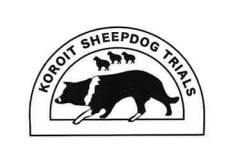Lame cows are frustrating, especially when the weather – which we have no control over – plays such a big part in increasing the risk of sore feet. Below are several things you can do to minimise the risk of lameness in wet conditions. This, in turn, will reduce the stress on your farm team in the cold and the wet, and maximise your herd’s foot health.
Why does lameness increase in wet conditions?
The horn of cows’ hooves softens when exposed to moisture for long periods. This softening makes hooves more susceptible to wear and tear: such as bruising, white line disease and penetration injuries. The skin between the claws also softens. As tracks deteriorate in wet conditions, and larger stones and gravel are exposed, it is easier for them to get caught between the claws and cause breaks in the skin. This allows the bacteria in the environment to enter and cause infection.

Rocks + soft skin + mud = foot rot, a bacterial infection of the soft skin between the claws of the hoof
Cow handling – slow and steady wins the race
Cows need to be able to look down at the ground in order to place their feet correctly: their back feet go where their front feet have been. Because they are herd animals, cows have a social hierarchy: this means they have an order in which they walk. Pushing cows at the rear of the herd will not make them go any faster as they will not pass the dominant cows ahead of them:
- Allow the herd to move slowly along tracks. A good mantra to have is: “heads down“. If a cow’s head is raised she can’t see where she’s placing her feet
- Consider installing an automatic gate opener which releases at a predetermined time, allowing cows to come home at their own pace
- Give cows time to choose a path through restrictions or through the areas where the track surface is damaged
- Don’t honk horns or use barking dogs – in this case, patience really is a virtue!
Protect hooves on concrete
Soft hooves will be quickly worn down by twisting and turning on rough concrete surfaces. It is important to minimise this effect:
- Keep concrete clean – remove stones from concrete surfaces daily. Minimise the time cows spend on concrete
- Place protective rubber matting on high-use areas: for example where cows push to get onto the rotary, and when they turn to leave
- Don’t bunch cows up in the yard and handle them calmly and quietly
Repairing tracks in wet conditions
In wet conditions, it is hard to re-surface tracks. Dairy Australia’s Managing Lameness in Wet Conditions fact sheet has some tips on preventative maintenance, including:
- Use sawdust or woodchips as a topping for the last 25m of track coming into the dairy (at least 300mm thick)
- Place a log or a 125mm high concrete nib wall at the track-yard junction to reduce the number of stones brought onto the concrete
- Top up deteriorated areas of track with sawdust, woodchips, old hay or finely crushed rock/limestone – compact repaired surfaces well
- Cut drainage channels through built up mud on the edge of tracks to allow water to flow off tracks into paddocks. Carry a shovel to clear drains quickly
- Fence off severely damaged areas of track that are beyond temporary repair. For paddocks where the entrance/exit is very boggy, lowering the fence to allow more space for cows to leave the paddock may help
Identify and treat lame animals ASAP – and minimise the amount of walking they have to do
Early identification of lameness, and the correct diagnosis and treatment will improve healing and reduce the negative effects such as milk drop (both now and over the rest of lactation), loss of body condition and poor reproductive performance. Overall costs and recovery times are greatly reduced if lameness is treated early:
- Remove any cow showing lameness from the herd for examination
- Restrain cow and lift, wash and examine the foot
- Treat lameness according to veterinary advice based on the diagnosis: not all lame cows need penicillin
- Use a rubber or wooden block to remove weight from the affected claw – this is really important to help cows move around while their lame claw heals
- Keep separate: the lame cow group needs to walk minimal distances on tracks and spend minimal time on concrete yards
Our vets and techs can help with the treatment of lame cows. Our hydraulic tipping crushes make the examination and treatment of lame cows easier – especially for large numbers of animals or those where multiple feet are affected. WestVic Dairy runs Healthy Hooves workshops for farm staff training, and more resources are available on the Dairy Australia website.

When treating lame cows it is important to remove all underrun hoof to help stop bacterial infection. A rubber or wooden block lifts the treated claw off the ground and help it heal.






























